
Finding the Right Table
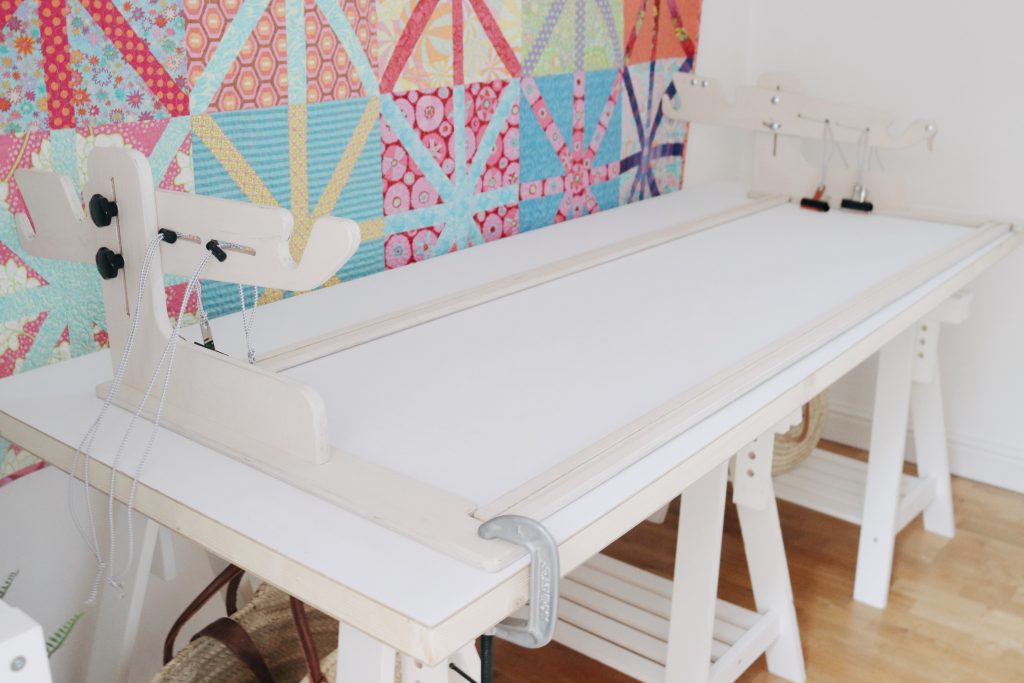 The Machine Quilter frame is designed to clamp to a table, so finding the right table is really important
The Machine Quilter frame is designed to clamp to a table, so finding the right table is really important
Table Talk

Finding the right table begins with work surface measurements.
The width. All our frames, regardless of the length, are the same width. The side arms that sit on the table and support the fabric poles are 2 feet 6 inches. So the width of the table for all the frames needs to be at least 2 feet 6 inches or 76 cm. It can be wider. There is also a 6 inch overhang at the back of the frame. So allow 3 feet of space in your room to accommodate the width of your frame.
The length. Machine Quilter frames come in 3 lengths; 6 foot, 8 foot and 10 foot 7 inches. The numbers refer to the size of the table necessary for each frame.
The 6 foot frame fits on a 6 foot (72 inch, 183 cm) table. The 6 foot frame gives you 55 inches (140 cm) of quilting space. It's ideal for smaller projects like single bed quilts, lap quilts, baby quilts, art quilts and table runners. The 6 foot frame requires a table that is 6 feet long by 2 feet 6 inches wide. It can be wider, 2 feet 6 inches is just the minimum width. It can be longer too. A few extra inches in length will give you space for your threads, bobbins, scissors and pins. It's helpful to have a place to keep things near to hand while you're quilting. Bearing in mind the 6 inch overhang, you will need 6 feet by 3 feet of space in your room to accommodate the 6 foot frame.
The 8 foot frame fits on an 8 foot (96 inch, 244 cm) table. The 8 foot frame gives you 79 inches (2 meters) of quilting space. It's perfect for larger bed sized quilts and anything smaller. The 8 foot frame requires a table that is 8 feet long by 2 feet 6 inches wide. The table can be longer and/or wider, that is just the minimum surface space required. With the 6 inch overhang, you will need 8 feet by 3 feet of room space to accommodate the 8 foot frame.
The 10 foot 7 inch frame fits on a 10 foot 7 inch (127 inches, 323 cm) table. The 10 foot 7 inch frame gives you 103 inches (262 cm) of quilting space. This is our extra long frame for those of you who love to quilt really big quilts! It will accommodate a king sized quilt and anything smaller. The 10 foot 7 inch frame requires a table that is 10 feet 7 inches long by 2 feet 6 inches wide. The table can be longer and/or wider, that is simply the minimum space needed. With the 6 inch overhang at the back of the frame, you will need to allow 10 feet 7 inches by 3 feet of space in your room.
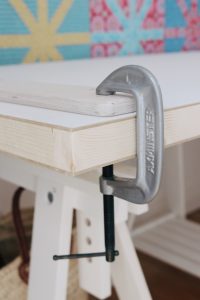
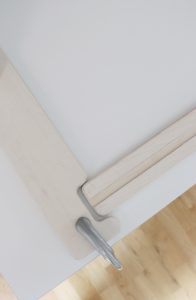
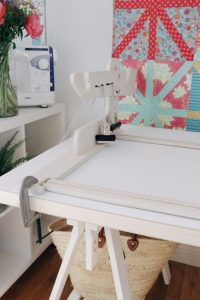
The table for your Machine Quilter frame should also be sturdy
The table needs to be sturdy enough to bear the combined weight of the Machine Quilter frame and the sewing machine. So a dining table would work but a wall paper pasting table would not! The Juki TL QVP Mini straight stitch machine is a workhorse. It has the weight of a proper machine with real metal parts. The weight of the machine means that it's been built to last. But it does require a sturdy table.
Another goal of the work surface is to absorb some of the vibrations created by the needle movement of the sewing machine. The sturdier the table, the better it will absorb the vibrations. Placing your table on carpet is also an aid to absorbing vibrations. Having said this, I use an inexpensive interior door on top of 3 IKEA trestles on floor boards. This works just fine for me.
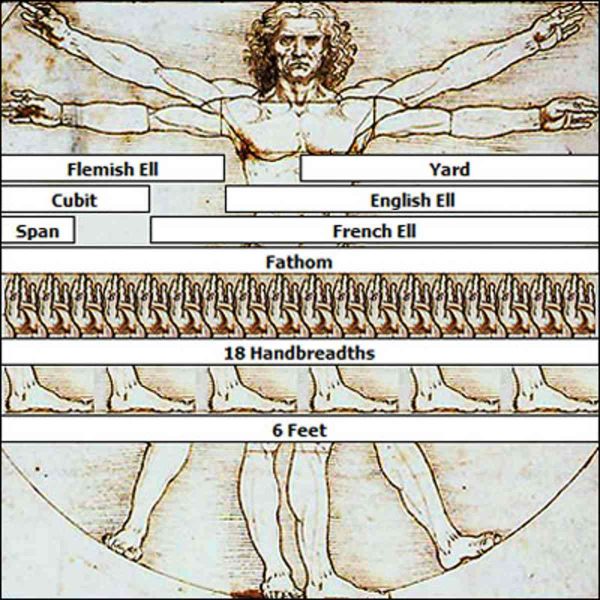
In olden times, craftsmen were able to commission tools designed, weighted and balanced to fit the body measurements of the person using them. Our modern and less personal version of this is ergonomics. In simple terms, an ergonomic design takes into account the comfort and safety of the person using the tool. We are all different sizes. A quilting frame is not a one-size-fits-all tool. We spent years designing the Machine Quilter frame to be easy and comfortable to use. This idea of fitting the tool to the person also comes into play when choosing a table to put it on.

Getting your table height right
It is super important that the height of the table matches the height of the person using it! If the table is the right height you will be able to use it comfortably without bending over or reaching up. You'll have good visibility and be able to easily see what you're quilting. Using a quilting frame is so much kinder to your body than trying to drag your quilt under the arm of your machine, but your table needs to be at the optimal height, for YOU.

That is why I love using the IKEA trestles. The trestles allow you to adjust the height until you find your optimal table level. I'm 5 foot 7 inches and a table height of 33 inches works well for me. Someone who is closer to 5 foot would need a table height that is closer to 29 inches. Most people will need to experiment to find the table height that is the most comfortable to use and allows for the best visibility.
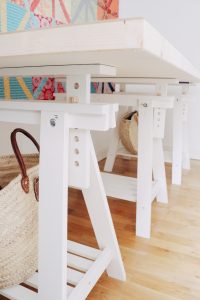
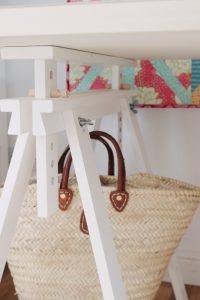
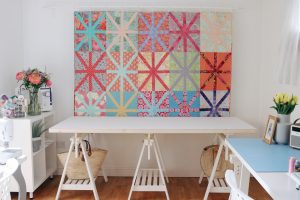
With these IKEA trestles you can play with different table heights until you find the optimal height for you!
Finding the right table for your Machine Quilter frame is easy if you know what to look for.
Use the measurements listed to figure out the length and width surface measurements to accommodate your particular Machine Quilter frame. Make sure that the table is sturdy enough to bear the combined weight of the frame and sewing machine. And most importantly, make sure that the height of your table fits you! Finding the right table will keep you quilting comfortably ever after.
Now your table is all set up, you're ready to load up your quilt - and knowing that your table is right will make things all the easier!

